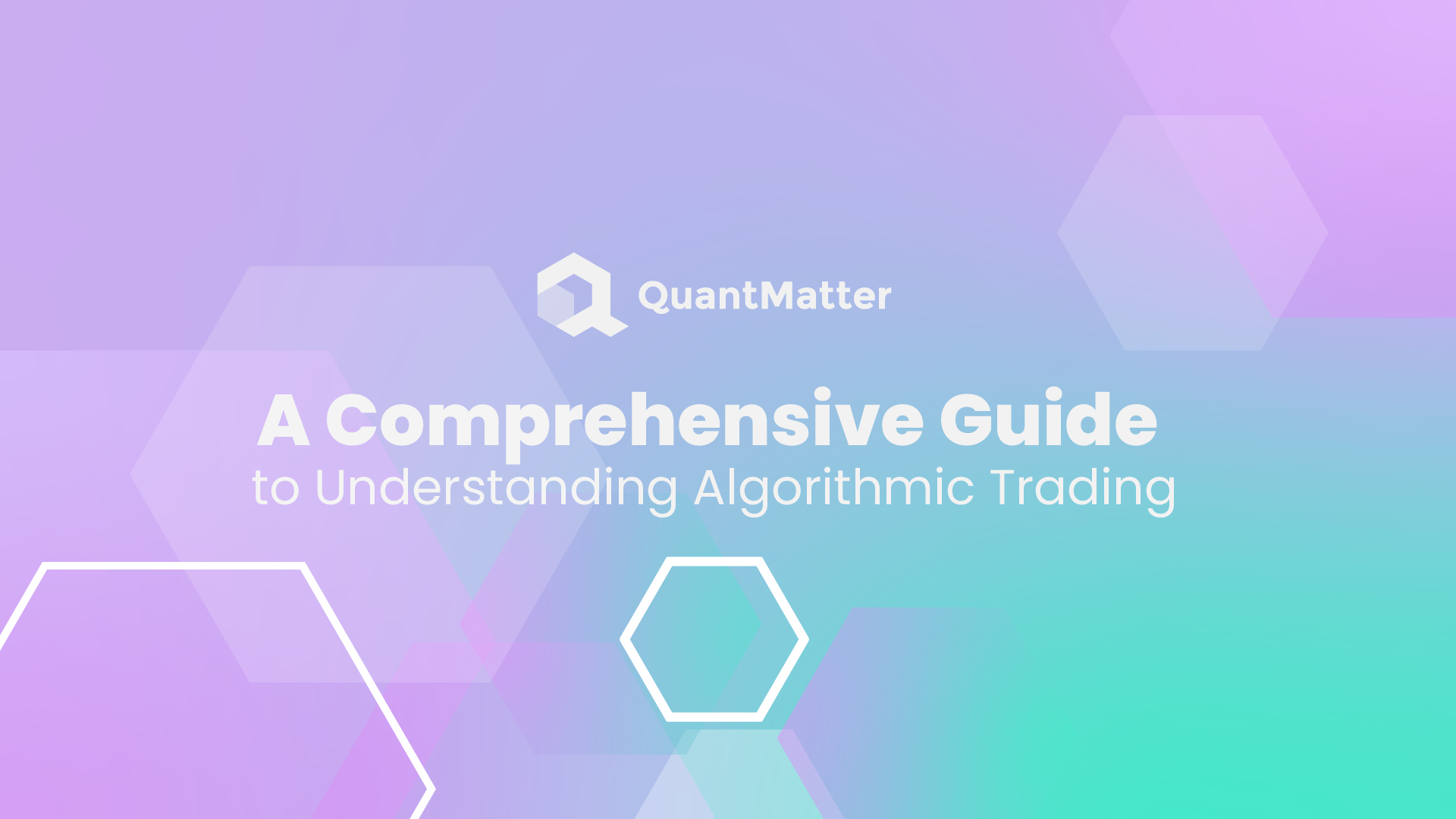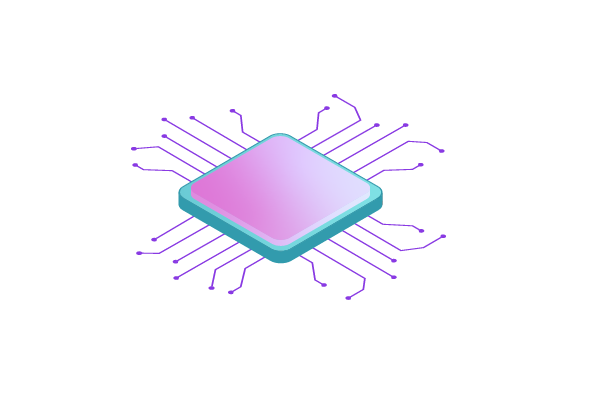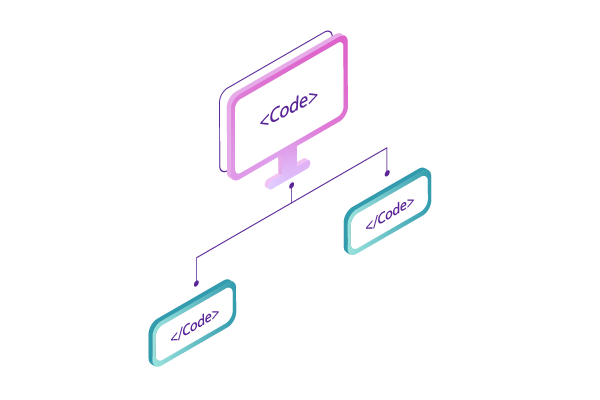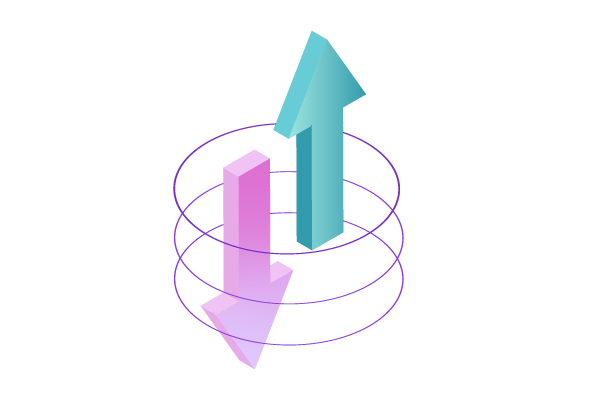
Algorithmic trading, also known as algo trading, is a smart way of dealing with financial markets. It uses computer programs to automatically make trades following set rules and strategies. This kind of trading has become really popular lately because it can make things work better, lower the chances of mistakes by people, and grab chances to make money in the market really quickly and accurately. This is done by using fast computers and special instructions that tell them what to do.
As technology keeps improving, algo trading is likely to become even smarter and more powerful. It might even start using things like artificial intelligence and machines that learn on their own to predict what the market will do next. So, it seems like algo trading is here to stay and will keep getting more advanced in the future.
If you’re interested in learning more about algorithmic trading and its various strategies, advantages, and challenges, read on below for a deeper dive into this fascinating topic.
The Concept of Algorithmic Trading

Algorithmic trading, also known as automated trading, black-box trading, or algo-trading, involves the utilization of a computer program to adhere to a predefined set of instructions, or algorithm, for executing trades. The primary objective of these trades is to potentially generate profits at a speed and frequency that surpass the capabilities of human traders.
These predetermined instructions are typically based on factors such as optimal timing for trading, desired price levels, trade quantities, or even complex mathematical models. Beyond its profit potential, algo-trading significantly impacts the dynamics of financial markets. It introduces greater fluidity and systematic order by mitigating the influence of human emotions on trading decisions.
Algorithmic trading, however, is not without its dangers. Unfavorable trades can result from errors in the instructions that are programmed into the system, as demonstrated by the infamous Flash Crash of 2010, which was brought on by errors in the program data. Similar to this, algorithmic trading can amplify price movements in both the upward and negative directions during periods of increased market volatility or stress, such as the 2020 market meltdown during the COVID-19 pandemic.
Different trading strategies can be employed. The fascinating world of algorithmic trading, encompassing its potential advantages and associated challenges, offers an intriguing exploration into the dynamics of modern financial markets.
Also Read: How Market Making Algorithms Works? The Future of Crypto
What are Types of Algorithmic Trading?

Algorithmic trading, also known as automated trading, is a smart way for investors to handle the complicated world of financial markets. It uses computers to do things quickly and accurately. This clever method helps traders handle lots of important information, like time, price, and how much is being traded, in many different markets. Here are some categories of Algorithmic Trading:
1. High-Frequency Trading Algorithm
High-frequency trading is a type of computerized trading that happens really fast. It uses smart programs to quickly buy and sell stocks when there’s a tiny difference in their prices for a very short time.
The goal is to make money from these quick changes in prices. High-frequency trading needs super-foradvanced technology and clever programs to work faster than humans. It’s a big deal in today’s electronic markets.
2. Market-making algorithm
Market-making algorithms help keep the trading market stable. They work by always offering to buy or sell stocks at prices that are a little different from the current market price. This helps keep the flow of people wanting to buy and sell steady.
By doing this, these algorithms help find fair prices and lower the cost of trading. They’re extra important during times when the market is changing a lot or when there aren’t many people trading.
3. Trend-following algorithms
Trend-following algorithms try to make money by noticing patterns in how a stock’s price goes up or down. They look at past price data to find trends that might continue.
When they see a trend, they make trades in the same direction to hopefully make money. But they can struggle if the market suddenly changes direction.
4. Arbitrage algorithms
Arbitrage algorithms look for price differences for the same thing on different markets. They quickly buy it where it’s cheaper and sell it where it’s more expensive, making a profit.
They have to be super fast and use real-time information to make this work. But it’s getting harder to find these opportunities because of technology and fast trading.
5. The Volume-Weighted Average Price (VWAP) algorithm
The Volume-Weighted Average Price (VWAP) algorithm helps big investors make large trades without causing big price changes. It spreads out the buying or selling over time to avoid sudden price swings.
It’s useful for big investors who need to make large trades without causing trouble in the market.
To sum up, computerized trading has changed how the financial markets work. It uses smart programs for different strategies like trading really fast, keeping the market stable, following trends, finding price differences, and making big trades slowly. This tech-driven trading is a big part of how people trade today, making finance more complex and fast.
The Advantages and Disadvantages of Algo Trading

Algorithmic trading, a cutting-edge approach driven by mathematical methods and algorithms, harnesses the power of technology to execute trades with remarkable speed and precision.
This advanced technique not only saves traders time but also minimizes human intervention, enabling trades to occur seamlessly and swiftly once the system is established. However, aside from the advantages, there are also some challenges, risks, and disadvantages to algo trading.
Advantages of Algorithmic Trading
1. Speed and Efficiency
The unparalleled speed of algorithmic trading is one of its primary advantages. Algorithms can process market data and execute trades in milliseconds, outpacing human traders by a significant margin.
This speed is crucial for capitalizing on fleeting market opportunities, especially in fast-moving markets where delays can result in missed chances.
2. Reduced Emotion and Bias
Algorithmic trading eliminates the influence of human emotions and biases that often cloud trading decisions. Fear, greed, and other emotional factors can lead to impulsive and irrational choices.
Algorithms follow predefined rules and strategies without being swayed by emotions, leading to more disciplined and consistent trading approaches.
3. Backtesting and Optimization
A distinct advantage of algorithmic trading is the ability to test strategies using historical data.
Traders can assess how their algorithms would have performed in past market conditions, allowing them to fine-tune and optimize strategies before deploying them in real-time markets. This backtesting helps increase the probability of successful outcomes.
4. Diversification
Algorithmic trading facilitates the simultaneous execution of multiple strategies across various markets and assets. This diversification spreads risk and reduces dependency on a single trading approach.
By leveraging algorithms for different market conditions, traders can potentially enhance their overall portfolio performance.
Disadvantages of Algorithmic Trading
1. Technical Glitches
The reliance on technology exposes algorithmic trading systems to technical glitches, software bugs, and connectivity issues. A malfunctioning algorithm can lead to unexpected and significant financial losses if not promptly addressed.
2. Over-Optimization
While backtesting is valuable, it carries the risk of overoptimization. Algorithms finely tuned to historical data may perform well in the past but poorly in live markets due to changing conditions.
This phenomenon, known as “curve fitting,” can undermine the algorithm’s effectiveness.
3. Regulatory and Legal Risks
Algorithmic trading operates under regulatory scrutiny, and improper practices can lead to legal and compliance challenges. Regulatory bodies monitor algorithmic trading activities to ensure fair and orderly markets, making adherence to rules and guidelines crucial.
4. Market Impact
Large-scale algorithmic trading can impact market dynamics. Rapid execution by multiple algorithms can lead to increased market volatility and exaggerated price movements. In extreme cases, this may contribute to market disruptions, especially during times of high stress or when liquidity is compromised.
As technology advances, algorithmic trading continues to reshape the landscape of financial markets. While its advantages are compelling, careful risk management, constant monitoring, and adherence to regulations are essential to mitigating potential pitfalls.
Striking a balance between harnessing automation’s potential and managing associated risks remains pivotal to successful algorithmic trading endeavors.
Also Read: Market Maker Options: Definition and How They Make Money
Conclusion
Algorithmic trading is like teamwork between computer software and financial markets. It uses special instructions written in code to decide when to start or stop trades. This helps investors and traders catch opportunities in the market. They can even use super-fast computers to trade very quickly.
In conclusion, algorithmic trading has changed how financial markets work. It’s a powerful tool that helps traders and investors make the most of market quirks and do trades super quickly. But there are also risks that need to be managed and rules to follow. As technology gets better, algorithmic trading will likely become even more important in the finance world. So, what do you think about it?
Disclaimer: The information provided by Quant Matter in this article is intended for general informational purposes and does not reflect the company’s opinion. It is not intended as investment advice or a recommendation. Readers are strongly advised to conduct their own thorough research and consult with a qualified financial advisor before making any financial decisions.
I craft stories that make complex ideas clear. I simplify the blend of data science, machine learning, and crypto trading, showcasing how advanced tech and quantitative models analyze data for informed trading choices. Join me in exploring the realm of quantitative trading, where my narratives make intricate concepts easy to grasp.
-
Alifia Berizkyhttps://quantmatter.com/author/alifia-berizky/
-
Alifia Berizkyhttps://quantmatter.com/author/alifia-berizky/
-
Alifia Berizkyhttps://quantmatter.com/author/alifia-berizky/
-
Alifia Berizkyhttps://quantmatter.com/author/alifia-berizky/

